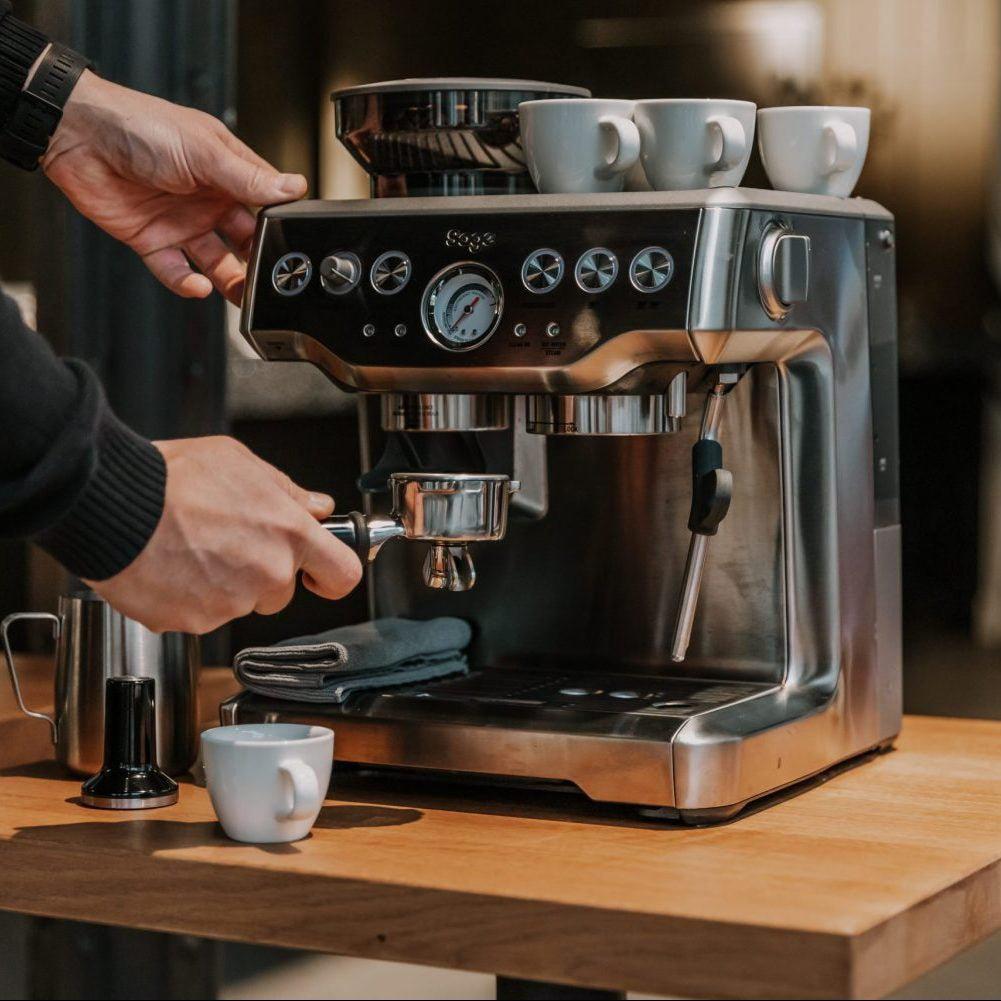As a dedicated coffee enthusiast, I've come to realize that perfecting espresso involves more than just getting the grind size and tamping right. The brew temperature, often overlooked, plays a crucial role in extracting the ideal flavor. My experience with the Breville (Sage in the UK) Barista Express revealed its full potential when I learned how to fine-tune the brew temperature. This guide will help you make those adjustments to enhance the flavor of your espresso, whether you're tweaking it for darker roasts or altitude variations.

Why Brew Temperature Matters for Espresso
Brew water temperature is key to flavor extraction. Water that's too hot will over-extract coffee, resulting in bitterness or a burnt taste, while water that's too cold can under-extract, making your espresso weak or sour. The ideal temperature range for brewing espresso is between 195°F and 205°F (90°C to 96°C). Different roast profiles and beans benefit from varying temperatures.
Lighter roasts, for example, shine at higher temperatures, bringing out their bright, complex flavors, whereas darker roasts fare better at slightly cooler temperatures, allowing their deep, rich body to emerge without excess bitterness.
Fortunately, the Breville/Sage Barista Express gives you the ability to adjust brew temperature, allowing for a more tailored coffee experience.
Understanding the Breville/Sage Barista Express Features
The Barista Express is a versatile, semi-automatic espresso machine that offers several customization options. It comes equipped with a PID (Proportional-Integral-Derivative) controller, which helps maintain a consistent temperature throughout the brewing process. Although it doesn't have an obvious temperature control dial, it does feature a hidden setting that lets you adjust the temperature.
Mastering this setting can significantly improve your espresso, letting you experiment with different flavors and profiles.
Adjusting the Brew Temperature: A Step-by-Step Guide
Turn Off the Machine
Start by turning off your Barista Express using the power button to ensure the machine is not in the middle of brewing or heating when making changes.
Enter Programming Mode
To adjust the temperature, you need to access the programming mode:
- Press and hold the Program button.
- While holding the Program button, press the Power button to turn the machine on.
- Continue holding the Program button until the control panel lights start flashing, signaling that you’re in programming mode.
Select Your Temperature Settings
In programming mode, adjust the temperature using the following buttons:
- Single Shot: Lowers the temperature by 2°F (1°C).
- Double Shot: Raises the temperature by 2°F (1°C).
- Filter Size: Restores the default temperature of 200°F (93°C).
You can track your temperature settings with the LED lights on the control panel:
- Both the 1 Cup and 2 Cup lights on indicate a default temperature of 200°F (93°C).
- Only the 1 Cup light on means a lower temperature (198°F or 92°C).
- Only the 2 Cup light on means a higher temperature (202°F or 94°C).
Fine-Tune Your Temperature
Adjust the temperature up or down using the Single Shot or Double Shot buttons, each of which alters the temperature by 2°F (1°C). This allows you to fine-tune the temperature to suit your preferences.
For instance:
- Higher temperatures enhance the bright, fruity flavors of light roasts.
- Lower temperatures emphasize the sweetness of dark roasts while reducing bitterness.
Save Your Temperature Settings
Once you’ve set the desired temperature, press the Program button again to save your settings and exit programming mode. The machine will briefly power off and restart, applying the new temperature.
Pull a Test Shot
After making the adjustments, brew a shot of espresso and assess the flavor and extraction time. If the result isn’t quite right, consider tweaking the temperature further or adjusting other factors like grind size or tamping pressure. Finding the perfect balance may take some experimentation, but the results will be worth the effort.
Troubleshooting Common Issues
Here are some tips for troubleshooting if you encounter difficulties:
- No Response to Temperature Adjustments: Double-check that the machine is in programming mode (indicated by flashing lights) before trying to change settings.
- Flavor Issues Persist: If changing the temperature doesn’t improve the flavor, consider other factors like grind size, tamping pressure, or bean freshness.
- Frequent Temperature Adjustments Needed: Lighter roasts usually perform better at higher temperatures, while darker roasts benefit from lower settings. Adjust accordingly depending on the beans you’re using.

Final Thoughts on Brew Temperature Adjustments
Fine-tuning the brew temperature on your Breville/Sage Barista Express is a simple yet impactful way to elevate your espresso experience. By adjusting the temperature, you can better suit the flavor profile of different beans, resulting in a more balanced and nuanced cup.
Through my own trials with temperature adjustments, I’ve found significant improvements in flavor. If you’re still using the default temperature settings, I highly recommend experimenting with these changes to discover how much better your espresso can be.
